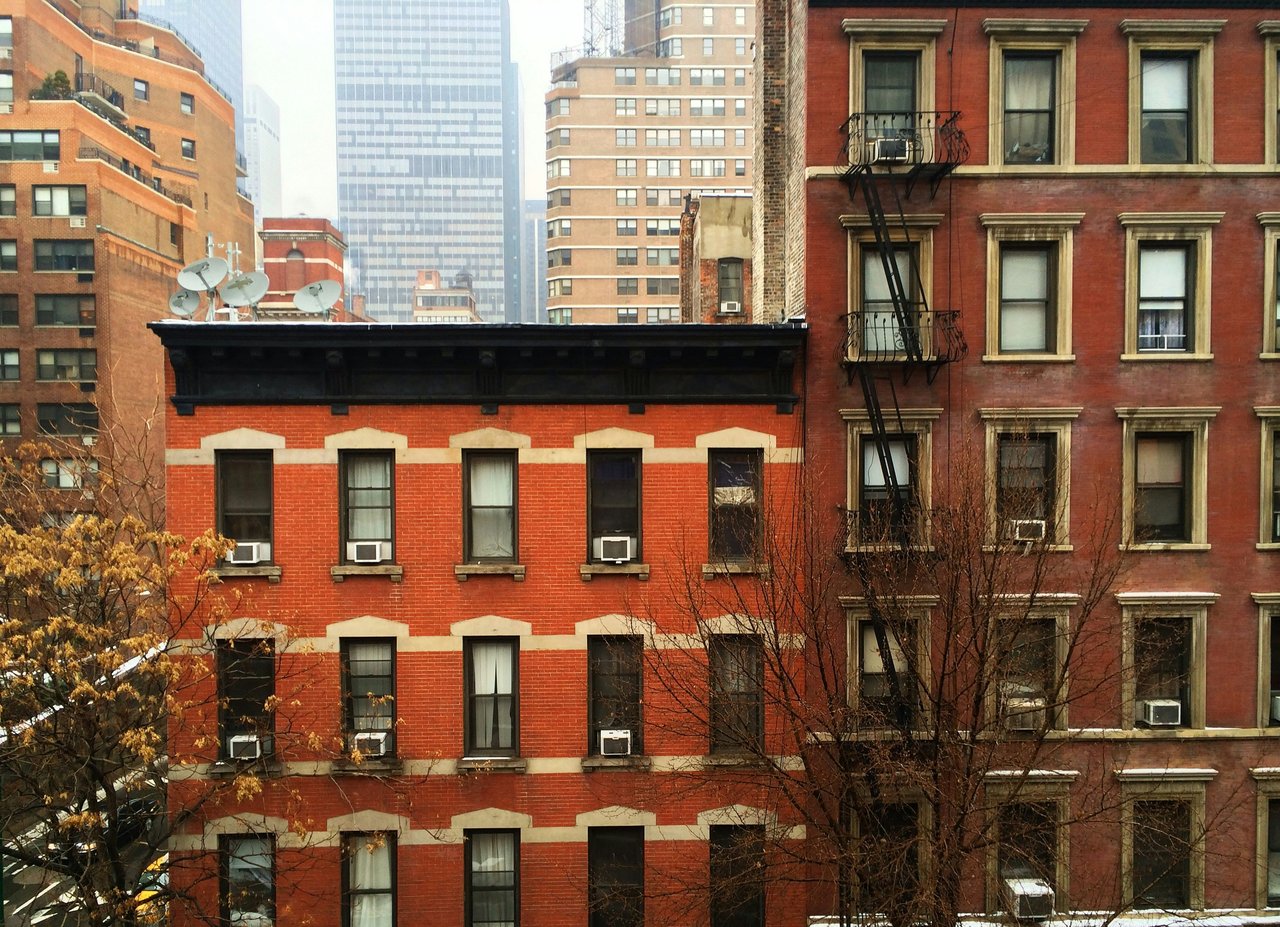Bedford-Stuyvesant, known affectionately as Bed-Stuy, is more than a Brooklyn neighborhood. It's a cultural landmark, a community built on history, resilience, and evolution. Having once lived in Bed-Stuy, there is a certain pride in walking down those brownstone-lined blocks, feeling the weight of heritage and the promise of change all at once.
If you’re fortunate enough to own a brownstone in Bed-Stuy in 2025, you already know you’re holding a valuable piece of New York City real estate. But with value comes decisions. Should you keep this asset for continued appreciation and rental income, or is it time to sell and diversify your portfolio?
The answer is rarely simple. This isn’t just a real estate question it’s a financial strategy conversation. Let’s explore the data, the emotion, and the economics of holding versus selling your Bed-Stuy brownstone.
Understanding Bed-Stuy’s Market in 2025
In 2025, Bed-Stuy remains one of Brooklyn’s most in-demand residential neighborhoods, especially among buyers who value classic architecture and cultural significance. The brownstone blocks, many with landmark status, offer not just charm but scarcity.
Despite cooling from the ultra-hot market of 2021–2022, the market has remained surprisingly stable. Prices have held firm, interest in renovated properties is still high, and supply remains constrained.
Snapshot of the 2025 Bed-Stuy Market
Let’s look at where things stand in practical terms.
|
Metric |
2025 Estimate |
|---|---|
|
Median Sale Price (Renovated) |
$2.3M to $2.7M |
|
Median Sale Price (Unrenovated) |
$1.6M to $2.1M |
|
Average Rent (Garden Unit) |
$3,200 to $4,800 per month |
|
Mortgage Interest Rate (Investor) |
5.75% to 6.5% |
|
Demand Level |
Moderate to High |
|
Inventory Availability |
Low to Moderate |
Properties that are owner-occupied, historically restored, or legally configured for rental are seeing the highest returns. Those who purchased before 2015 have likely doubled, or even tripled, their investment.
Reasons to Keep Your Brownstone
Holding onto a Bed-Stuy brownstone can offer considerable advantages. From long-term value appreciation to passive income potential, keeping the property may align with both financial and personal goals.
Long-Term Appreciation Remains Promising
While the breakneck price increases of the early 2010s have tapered off, the fundamentals behind Bed-Stuy's value remain strong. The historic appeal of the architecture, combined with ever-increasing demand for family-sized homes in Brooklyn, suggests that value will continue to grow steadily.
Even a conservative 3 to 4 percent annual appreciation rate could add between $800,000 to $1.2 million in value over the next 10 years for a property worth $2.5 million today.
Furthermore, as citywide housing development focuses on large-scale multifamily buildings and towers, the unique allure of classic brownstones becomes more precious and difficult to replicate.
Rental Yields Can Outperform Other Investments
If you're not currently occupying your brownstone, or if it’s a multi-unit building, rental income can deliver reliable monthly cash flow and long-term yield. Even after accounting for maintenance, taxes, and management, net yields in Bed-Stuy often outperform bonds, many stocks, and other passive income options.
|
Configuration |
Monthly Gross Rent |
Estimated Annual Net Income |
|---|---|---|
|
Owner + 1 Rental Unit |
$3,800 |
$35,000 to $42,000 |
|
Fully Leased 3-Family |
$9,000 |
$75,000 to $95,000 |
|
4-Unit Configuration |
$12,000 |
$100,000 to $125,000 |
These cash flows can support a flexible lifestyle, serve as a retirement fund, or fuel additional investments.
Tax Deferral and Estate Planning Advantages
One of the most compelling reasons to hold is tax efficiency. When you sell a highly appreciated property, you may face federal and state capital gains taxes, depreciation recapture, and New York City transfer taxes.
If instead you hold the property until death, your heirs receive a step-up in basis, which could eliminate capital gains liability altogether.
You may also depreciate the building structure over time, even while it appreciates in market value, creating tax-sheltered income.
Emotional and Cultural Value
There’s more to Bed-Stuy than spreadsheets. If your brownstone is a family home, a multi-generational investment, or part of your personal history, keeping it may be about legacy as much as liquidity.
Many homeowners in Bed-Stuy have deep emotional ties to the neighborhood, and it’s perfectly reasonable to let those ties inform your long-term decision-making.
Reasons You Might Want to Sell
Selling can be a smart, strategic choice depending on your financial goals, risk tolerance, and life plans. Market timing, equity gains, and shifting personal needs all factor into this decision.
Your Equity Has Grown Significantly
If you purchased your home before 2015, you’ve likely seen enormous appreciation. For example, someone who bought for $900,000 in 2012 might now be looking at a property worth $2.5 million.
That’s $1.6 million in potential equity—most of which may be tied up unless you refinance, take a HELOC, or sell. Refinancing at today’s higher interest rates is more expensive and may not make financial sense. Selling can unlock that capital for:
-
Diversified investments
-
Retirement planning
-
Family support
-
Geographic relocation
Market Timing and Real Estate Cycles
Real estate does not go up in a straight line. While the Brooklyn market has performed well over the past 15 years, future returns may slow.
Higher mortgage rates, increasing taxes, and political pressures on landlords could reduce investor appetite in the years ahead. If values plateau or decline, holding out for a better price could mean missing the peak.
Rental Headaches and Regulation Fatigue
Being a landlord in New York City means navigating:
-
Rent stabilization laws
-
Construction permits and DOB inspections
-
Increasing property taxes and insurance costs
-
Delayed legal processes for eviction or disputes
-
Regulatory risk from political changes
If managing the property no longer fits your lifestyle, or you are relocating, the simplicity of a sale may be the right option.
What About Taxes?
Tax planning is at the heart of any hold-or-sell decision. Real estate gains are taxable, but there are legal ways to reduce or defer the bill.
Homeowner Capital Gains Exclusion
If you’ve lived in your brownstone for at least two of the past five years as your primary residence, you may qualify for the capital gains exclusion:
-
Single filer: Up to $250,000 of gain excluded
-
Married couple: Up to $500,000 of gain excluded
If your gain exceeds those amounts, the excess is subject to federal and state capital gains tax.
1031 Exchange
A 1031 exchange allows you to defer taxes by reinvesting the proceeds into another investment property. To qualify:
-
Identify a replacement property within 45 days
-
Close on the new property within 180 days
-
Purchase price must be equal to or greater than the sale price
-
You must use a qualified intermediary to hold the funds
This option is useful if you want to transition to a different property or market but keep your investment dollars in real estate.
Depreciation Recapture and State Taxes
If you’ve claimed depreciation on the property for tax purposes, you’ll owe depreciation recapture tax upon sale up to 25 percent on the amount depreciated.
You’ll also owe:
-
Federal capital gains tax (up to 20 percent)
-
New York State capital gains tax (up to 8.82 percent)
-
New York City tax (up to 3.876 percent)
-
Real estate transfer tax on the sale
These taxes can add up quickly, which is why timing and structure matter. Work with a tax advisor or estate attorney before initiating a sale.
A Decision-Making Matrix
Let’s boil this down into a comparative snapshot. This table can help clarify the pros and cons based on your current priorities.
|
Factor |
Keep the Brownstone |
Sell the Brownstone |
|---|---|---|
|
Long-Term Appreciation Potential |
Strong |
Forgone |
|
Monthly Cash Flow (from rentals) |
Available |
Eliminated |
|
Stress and Management Burden |
Moderate to High |
Minimal after sale |
|
Tax Liability (short-term) |
Deferred or avoided |
Triggered upon sale |
|
Access to Equity |
Limited (unless refinanced) |
Full liquidity |
|
Portfolio Diversification Potential |
None |
High post-sale |
|
Legacy Planning |
Yes, via inheritance |
Possible, but less direct |
|
Emotional/Cultural Value |
Preserved |
Disconnected |
Real-Life Scenarios
Sometimes it helps to look at how others are approaching this decision. Here are three composite examples based on real client situations.
Retired Couple, No Mortgage
-
Purchased in 2005 for $700,000
-
Fully paid off, currently renting out two units
-
Considering retiring out of state
Strategy: This couple may benefit from selling and reinvesting via a 1031 exchange into a single-level property in a lower-tax state like Florida or North Carolina. They can simplify their lives while preserving equity and income.
Investor With Multiple Brownstones
-
Owns three brownstones acquired between 2012 and 2016
-
Facing rising property taxes and tenant law restrictions
Strategy: Consider selling one property to reduce leverage and reposition capital into a mix of commercial property and passive REITs. This de-risks the portfolio without liquidating all assets.
Siblings Inheriting a Brownstone
-
Family home owned since 1988
-
Inherited jointly by three adult siblings
-
Disagreements about future use
Strategy: Create a family trust or LLC. If consensus cannot be reached, sell the home and split the proceeds equally. If one sibling wants to keep it, the others can be bought out using an appraisal-based structure.
Let’s Talk About Your Long-Term Plan
Whether you decide to keep or sell your Bed-Stuy brownstone, the key is to align your decision with a well-structured, long-term financial strategy. This is not just about real estate. It’s about wealth preservation, lifestyle freedom, and legacy.
You may find the idea of selling too disruptive. Or you may be itching to deploy your equity into new ventures. Either way, the right move will come from clarity—not pressure.
As someone who lived in Bed-Stuy and continues to work with clients throughout Brooklyn, I understand both the personal and financial weight of this decision. I’m here to help you evaluate your options carefully and strategically.
Let’s set up a conversation. No sales pitch. Just a professional, confidential discussion about your goals, your property, and your future.
Schedule your strategy session today. Let’s build the next chapter of your plan together.



